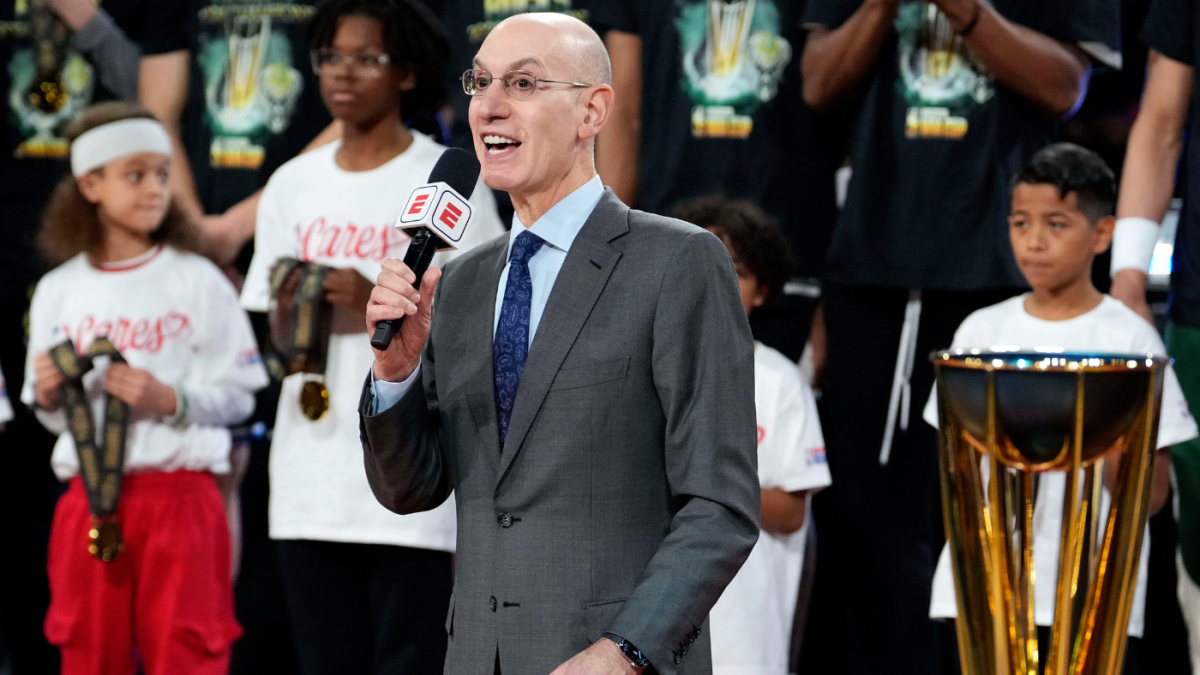A New Chapter for the NBA All-Star Game: USA vs. World Format in 2026
The NBA is set to reinvent one of its hallmark events with an international twist. The 2026 NBA All-Star Game will introduce a “USA vs. World” format, pitching the top American athletes against the best players from the rest of the globe. This marks the first time in decades the league is directly staging a contest that leans into global rivalry, reflecting the sport’s globalized talent pool and audience. Commissioner Adam Silver has championed this change, signaling an exciting evolution in the tradition and presentation of the league’s marquee midseason event.
—
Breaking from Tradition: What’s Changing?
Historically, the NBA All-Star Game has experimented with various formats including conference-based teams and draft-style selections with players picking squads regardless of conference alignment. However, viewer engagement and fan excitement have fluctuated over the years, prompting calls for innovation. The introduction of the USA vs. World rivalry format responds to this challenge directly.
Adam Silver confirmed that the 2026 All-Star Game will adopt this format as a way to revitalize the event, leveraging national pride without creating a divisive or hostile environment. This approach aims to capitalize on the international diversity within the league—stars from multiple countries play alongside and against one another every week—making this format especially relevant today.
—
Timing and Broadcast Strategy
The 2026 game will also shift from its traditional evening start to an afternoon tip-off. This strategy coincides with other major sports events happening on the same day, including Winter Olympic competitions, optimizing viewership flow for sports fans. This scheduling tweak demonstrates the NBA’s commitment to maximizing exposure and integrating its flagship event more seamlessly into the broader sports calendar.
—
Inspired by Other Sports: Learning from the NHL
The USA vs. World format is not entirely unprecedented; the NHL has used a similar concept in their All-Star contests. NBA commissioner Silver referenced taking a page from the NHL’s playbook, indicating a willingness to borrow successful elements from other sports to enhance fan experience.
The NHL’s success with this format shows how framing competition around international pride can energize audiences and lend more meaningful stakes to what is traditionally an exhibition game. The NBA’s adaptation will be closely watched as a potential model for increased global engagement.
—
Reception and Implications for Global Basketball
The announcement was met with positive reactions from fans and analysts alike who have long desired a format that showcases basketball’s status as a truly international sport. The presence of numerous international NBA stars, from Europe, Africa, Asia, and beyond, makes the “World” team an attractive and competitive unit that can showcase skill and cultural pride.
This format offers the NBA a platform for promoting its global strategy, including expanding the game’s popularity outside the U.S. The symbolic importance of USA versus the World teams highlights basketball’s role as a unifying yet competitive global sport.
—
Challenges and Considerations
While this international format offers fresh marketing and storytelling opportunities, potential challenges exist. For example, balancing competitive intensity without exacerbating nationalism is delicate. Silver noted the event will “play off that nationalism” positively but without fostering hostility, aiming for celebration, not division.
Additionally, logistics such as player selection, team chemistry, and ensuring competitive balance will require careful management so the game remains entertaining and fair. The NBA’s ongoing adjustments since 2013 reflect the difficulty in landing on an ideal All-Star format that satisfies players, fans, and broadcasters alike.
—
Evolution of the All-Star Game Format
Over the years, the NBA has experimented with many All-Star formats—from traditional East vs. West matchups to fantasy draft styles initiated in 2018. Despite these iterations, the league struggled with declining viewer numbers and critiques of the game’s intensity.
The move to a USA vs. World format can be seen as a culmination of these efforts, embracing the league’s increasingly international character and global fan base. It recognizes that superstar talent and basketball passion transcend borders, creating a larger narrative around the sport.
—
Broader Cultural and Business Impact
The new All-Star format aligns with broader trends in sports where international identities and global competition play an important role moving forward. By spotlighting the best American players and their global rivals, the NBA taps into themes of multiculturalism, international cooperation, and sports diplomacy.
Moreover, this strategy could positively impact sponsorship, broadcasting rights, merchandise sales, and fan engagement worldwide. Broadcasters such as NBC, which reportedly desires an international format for the All-Star game, stand to benefit from increased global viewership and associated revenues.
—
Conclusion: A Bold Step Toward Global Basketball Unity
The NBA’s decision to adopt the USA vs. World format for the 2026 All-Star Game represents a bold and strategically savvy evolution. It honors basketball’s roots in the United States while celebrating its global expansion, offering an engaging platform where national pride and international respect meet on the hardwood.
As the league continues to innovate and evolve, the 2026 All-Star Game could become a defining moment—a vibrant celebration of basketball’s universal language and a reinvigoration of a beloved sporting tradition. This format promises not only exciting basketball but also a powerful narrative capturing the dynamic global spirit of the sport.





